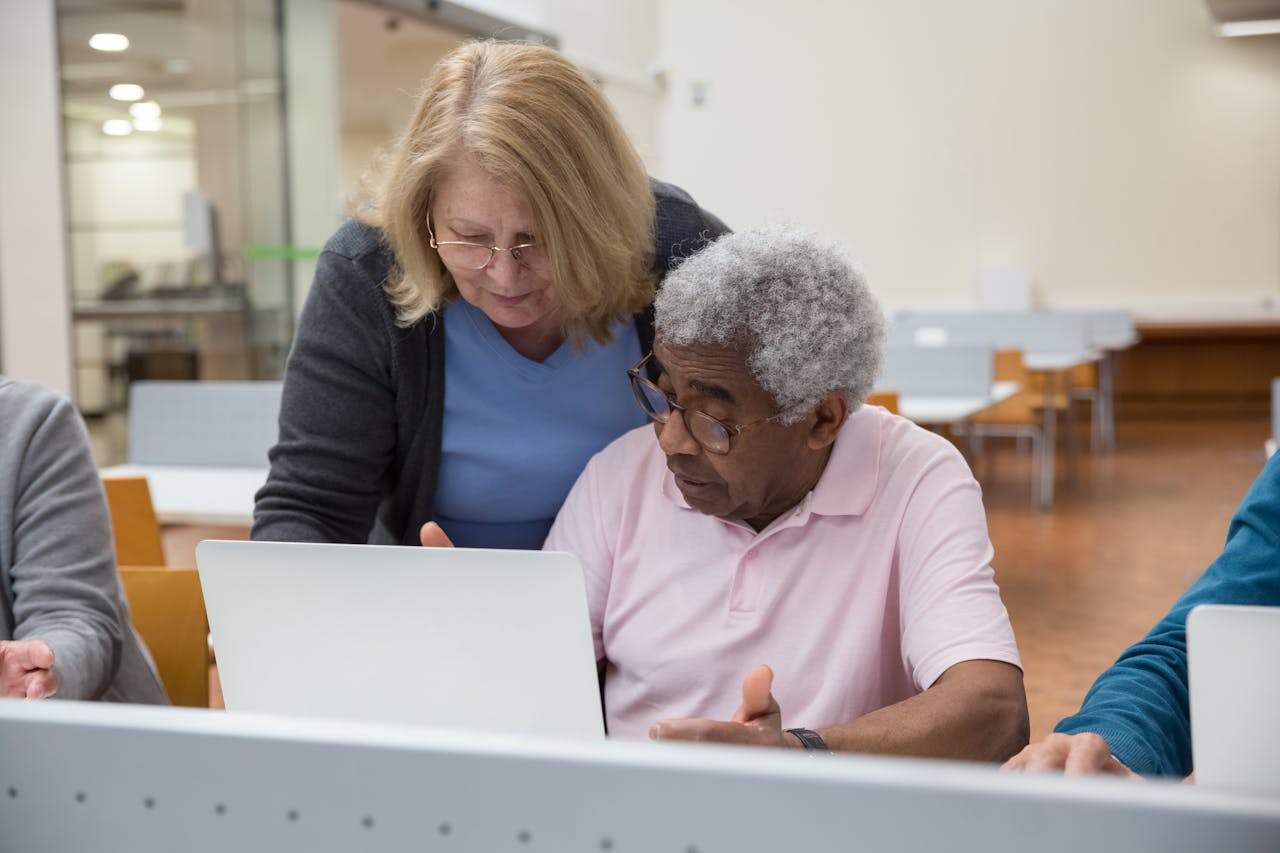In recent years, the landscape of technology has undergone significant transformations, particularly in its application to support disabled adults. With advancements in various fields, tech solutions for disabled adults have become increasingly sophisticated and accessible, aiming to meet a wide range of needs. Accessibility has emerged as a pivotal theme within these developments, ultimately driving the creation of more inclusive products and services designed to empower individuals with disabilities.
The significance of accessibility in tech solutions cannot be overstated. It involves the creation of adaptable tools that foster independence, enabling disabled adults to navigate daily life more effectively. This shift towards accessibility reflects a broader societal recognition of diverse needs and the importance of including all individuals in the technological narrative. As companies prioritize user-centered design, innovations in assistive technologies are increasingly tailored to enhance the lives of those with varying disabilities.
The growing market for assistive technologies is indicative of rising consumer demand for effective, user-friendly products. This increase in availability is driven not only by an enhanced understanding of the challenges faced by disabled adults but also by advancements in technology such as artificial intelligence, machine learning, and Internet of Things (IoT) capabilities. These innovations offer the potential to create customized tech solutions, ensuring that users can find resources that best suit their individual requirements.
Moreover, the impact of the right tech solutions on the independence and quality of life for disabled adults is profound. With appropriate tools at their disposal, individuals are better equipped to manage their daily tasks, engage with their communities, and advocate for their rights. This empowerment through technology underscores a commitment to fostering inclusivity, equality, and dignity, ultimately enhancing the overall well-being of disabled adults.
Types of Assistive Technologies
Assistive technology encompasses various devices and systems designed to improve the quality of life for disabled adults by catering to their specific needs. These technologies can be broadly categorized into three main types: communication devices, mobility aids, and visual/hearing assistance tools. Each category addresses unique challenges posed by different disabilities, thereby enhancing independence and empowerment.
Communication devices are essential for individuals with speech or language impairments. These devices range from simple picture boards to sophisticated speech-generating technology. For instance, Augmentative and Alternative Communication (AAC) devices enable users to communicate effectively through symbols or text that are converted into speech. By employing such tech solutions for disabled adults, individuals can participate in conversations, express their needs, and engage in social interactions more seamlessly.
Mobility aids are crucial for those with physical disabilities that impede movement. This category includes wheelchairs, scooters, and prosthetic devices. Electric wheelchairs, for example, allow users greater freedom of movement and accessibility in various environments. Additionally, specialized walking aids, such as canes or walkers, provide the necessary support for those with balance or coordination challenges. Through these mobility-enhancing technologies, disabled adults gain a measure of autonomy that significantly impacts their daily life.
Visual and hearing assistance tools are vital for individuals with sensory impairments. Screen readers, which convert text into spoken language, assist visually impaired users in accessing information online. Conversely, hearing aids and cochlear implants provide crucial support for those with hearing loss, enabling them to engage more fully in conversations and sound-rich environments. These tech solutions for disabled adults enhance sensory perception and foster inclusion in various social and professional settings.
Overall, assistive technologies play an integral role in facilitating a more accessible lifestyle for disabled adults. By addressing the specific obstacles faced by individuals, these tools not only promote independence but also reinforce the capabilities of those who utilize them.
Smart Home Technologies
Smart home technologies play a significant role in enhancing the everyday lives of disabled adults, offering features that foster independence, security, and convenience. With the advent of innovative voice-activated systems, individuals can control various home devices hands-free, effectively eliminating physical barriers that may hinder interactions. For those with mobility challenges, the ability to operate lights, thermostats, and appliances simply by speaking is revolutionary, as it enhances comfort and promotes a sense of autonomy.
Automated home controls are another facet of smart home technology that is particularly beneficial for disabled adults. Automation enables the scheduling of tasks, such as turning on lights at specific times or adjusting the thermostat throughout the day, ensuring a seamless living experience. This can be incredibly advantageous for individuals who may have difficulty with manual controls or who require consistent environments, thereby reducing the effort involved in managing daily household activities.
Remote monitoring systems further contribute to the transformative impact of tech solutions for disabled adults. These systems allow caregivers and family members to check in on individuals in real-time, providing peace of mind without infringing on personal independence. For instance, smart cameras or sensors can alert caregivers if a fall occurs or if there is an unsafe situation. Furthermore, certain devices can be integrated with health monitoring technologies, facilitating timely responses in case of emergencies.
Incorporating these advancements into everyday life not only increases safety and security but also empowers disabled adults to live more manageable and independent lives. By utilizing smart technologies within the home, individuals can cultivate an environment that is responsive to their needs and preferences, thus enhancing overall quality of life. The continuous evolution of tech solutions for disabled adults signals a promising future where independence is accessible to all, regardless of physical limitations.
Software Solutions for Mental Health and Well-being
The mental health and well-being of disabled adults are paramount, and various software solutions have emerged to cater specifically to their needs. Numerous applications offering therapeutic, meditative, and social connectivity features can significantly enhance emotional resilience and overall quality of life.
One notable category is therapy applications that provide access to licensed mental health professionals through remote consultations. Such platforms allow disabled adults to engage in therapy sessions from the comfort of their homes, eliminating the barriers posed by transportation or physical accessibility. They often include features such as chat-based support, video calls, and continuous progress tracking, ensuring a comprehensive approach to mental health care. Examples include Talkspace and BetterHelp, which not only facilitate therapy but also create an engaging interface that can be customized according to individual preferences.
Additionally, meditation tools like Calm and Headspace play a vital role in promoting mental wellness. These applications offer guided meditation, mindfulness exercises, and relaxation techniques that can be particularly beneficial for individuals with disabilities. They often feature accessibility options such as voice commands and adjustable text size, making them user-friendly for persons with varying levels of ability. By incorporating these practices into their routine, disabled adults can better manage stress, anxiety, and depressive symptoms.
Furthermore, social connectivity platforms specifically designed for disabled adults foster a sense of community and belonging. These platforms enable individuals to communicate and share experiences with others facing similar challenges. Engaging in such social networks enhances emotional support and promotes mental health by reducing feelings of isolation. Popular options include communities like PatientsLikeMe and Facebook groups centered around specific disabilities, allowing users to connect and share valuable resources.
In conclusion, the advent of tailored software solutions represents a vital advancement in promoting mental health and well-being for disabled adults. By leveraging these tech solutions for disabled adults, individuals can find personalized support that enhances their emotional resilience and improves their quality of life.
The Role of Wearable Technology
Wearable technology has emerged as a pivotal resource in enhancing the quality of life for disabled adults. Devices such as smartwatches and health tracking systems provide innovative tech solutions for disabled adults, focusing on empowering them to manage their health conditions effectively. These devices offer features that cater to varying physical and cognitive abilities, ensuring inclusivity in health management.
One of the most significant advantages of these devices is real-time health monitoring. For disabled adults who may require constant oversight of specific medical conditions, wearable technology can provide alerts for irregularities such as abnormal heart rates or sudden changes in body temperature. This immediate feedback facilitates prompt medical intervention, which can be crucial in emergencies. Additionally, many of these devices are equipped with GPS tracking capabilities, which can aid caregivers in locating individuals who may wander or require assistance.
Another feature integral to wearable tech is medication reminders. For many disabled adults, adhering to medication routines can be challenging. Wearable devices can be programmed to send reminders when it’s time to take medications, ensuring that users comply with their prescribed regimens. This is particularly beneficial for those with cognitive impairments or memory difficulties, offering a structured approach to medication management.
Moreover, fitness tracking features embedded in these devices encourage physical activity tailored to individual capabilities. Whether it involves step counting or monitoring activities such as cycling or swimming, these metrics can educate users about their physical health and motivate them to exercise safely. By integrating movement into daily routines, wearables contribute to overall well-being, fostering a sense of accomplishment among disabled adults.
In conclusion, wearable technology exemplifies how innovative tech solutions for disabled adults can enhance independence and health management, ensuring a more empowering and fulfilling lifestyle.
Telehealth and Remote Healthcare Services
Telehealth has emerged as a significant advancement in healthcare, particularly for disabled adults who often face mobility challenges. The advent of remote healthcare services offers substantial benefits, enhancing access to medical care for individuals who may find it difficult to travel for in-person consultations. These tech solutions for disabled adults are designed to bridge the gap between patients and healthcare providers, significantly impacting their overall well-being.
One of the primary advantages of telehealth is the convenience it provides. Disabled adults can engage with healthcare professionals from the comfort of their own homes, eliminating the need for transportation and reducing the associated stress and fatigue. This is especially important for individuals with limited mobility or chronic conditions that can be exacerbated by long journeys to medical facilities. With telehealth services, routine check-ups and consultations can be seamlessly integrated into daily life.
In addition to convenience, telehealth has demonstrated the potential to improve health outcomes. Regular virtual check-ins enable healthcare providers to monitor patients more closely and adjust treatment plans as necessary. This proactive approach may lead to better management of chronic conditions, ultimately contributing to a higher quality of life. Moreover, remote healthcare services often facilitate immediate access to specialists who might not be locally available, ensuring that disabled adults receive appropriate care in a timely manner.
Telehealth also empowers disabled adults by granting them a sense of autonomy in managing their healthcare. With the integration of various tech solutions, individuals can actively participate in their health management, making informed decisions about treatments and lifestyle changes. By harnessing the power of technology, telehealth alleviates barriers to access, thereby paving the way for improved health outcomes and overall empowerment for disabled adults.
Barriers to Adoption of Technology
In recent years, technology has played an increasingly crucial role in improving the quality of life for disabled adults through innovative tech solutions. However, despite this potential, many face significant barriers that hinder their ability to adopt these technologies. One of the primary challenges is financial constraints. Advanced assistive devices and software often come with a steep price tag, making them inaccessible for many individuals who may already be facing economic difficulties due to their disabilities. Without financial support, such as subsidies or grants specifically designed for disabled adults, the gap between available technology and its usage continues to widen.
Another major barrier is a lack of awareness regarding available tech solutions for disabled adults. Many individuals may not be fully informed of the products and services that can enhance their daily lives. This unawareness can stem from insufficient marketing or outreach efforts tailored to disabled communities. Furthermore, some may not have access to information sources that discuss various technologies and their benefits. Educational initiatives aimed at raising awareness are essential to overcoming this obstacle, ensuring that disabled adults are aware of the resources available to them.
Usability issues present another significant hurdle. Technologies that are not designed with the needs of disabled adults in mind can be difficult, if not impossible, to use effectively. This includes software with non-intuitive interfaces, devices that lack customization options, or hardware that does not accommodate various disabilities. For tech solutions to be truly empowering, they must prioritize user-friendly designs that consider the diverse needs of disabled adults. Addressing these barriers through targeted education, financial support, and improved design can significantly increase the adoption of technology, ultimately enhancing the lives of those affected.
Case Studies and Success Stories
The integration of tech solutions for disabled adults has proven to be transformative, enhancing their quality of life and fostering greater independence. One remarkable example is the story of Sarah, a young woman diagnosed with muscular dystrophy. Sarah utilized a voice-activated smart home system that allowed her to control her environment effortlessly. From adjusting the thermostat to operating the lights, the system not only gave her control over her living space but also instilled a sense of autonomy that had previously been elusive. This case highlights how adaptive technology can empower individuals with disabilities to navigate their daily tasks without assistance.
Another inspiring example is the implementation of communication devices for individuals with speech impairments. David, a young gentleman with cerebral palsy, was introduced to a tablet equipped with a specialized speech-generating app. Prior to this technology, David faced significant challenges in expressing himself, which affected his social interactions and self-esteem. With the aid of this app, David was able to share his thoughts and participate in conversations, profoundly improving his social skills and overall confidence. This success story illustrates the potential of tech solutions for disabled adults to bridge communication gaps and foster connections.
Moreover, assistive technology has not only impacted individuals but also communities. A local organization initiated a program providing wheelchair-accessible smart transportation solutions for adults with mobility challenges. Feedback from participants indicated that these tech solutions for disabled adults facilitated greater access to employment opportunities, social events, and recreational activities. The combination of advanced logistics and accessibility features showcased how technology can create inclusive environments, allowing individuals with disabilities to engage fully in their communities.
These case studies exemplify the broader implications of technology in addressing the unique needs of disabled adults. They underline the necessity for continued innovation in tech solutions, ensuring that the lives of individuals with disabilities are meaningfully improved.
Future Trends in Assistive Technology
The landscape of assistive technology is continuously evolving, marked by emerging trends that are driving significant advancements. As society places increased emphasis on inclusivity, tech solutions for disabled adults are becoming more innovative and versatile. One of the most notable trends is the integration of artificial intelligence (AI) in assistive devices. AI is enhancing the functionality of these tools, making them smarter and more responsive to individual needs. For instance, AI-powered software can learn a user’s preferences over time, thereby offering personalized assistance, which is crucial for effectively supporting disabled adults.
Another area poised for growth is the field of robotics. Robotics has the potential to transform how disabled individuals interact with their environment. Robotic exoskeletons and assistive robots are already providing substantial support in mobility and daily tasks, enabling greater independence for users. These technological advancements promise not only to improve physical capabilities but also to foster emotional well-being by enhancing the quality of life.
Smart devices are also amplifying the way disabled adults access their environments and essential services. Home automation technologies are now designed with accessibility in mind, allowing individuals to control various aspects of their living space through voice commands or mobile applications. Such innovations simplify daily routines, ensuring that disabled adults can manage their homes with ease and efficiency. Moreover, the continuous evolution of mobile applications focused on accessibility is leading to a plethora of resources tailored to meet the varying needs of users.
In conclusion, the future of assistive technology appears promising, with significant innovations that will likely reshape the landscape for disabled adults. As we embrace these advancements—whether through AI, robotics, or smart technology—we will continue to empower individuals, providing them with the tools and resources necessary to lead fuller, more independent lives.



